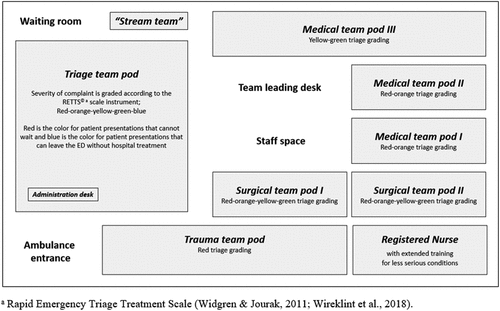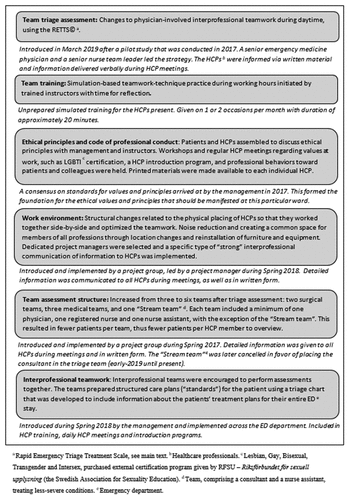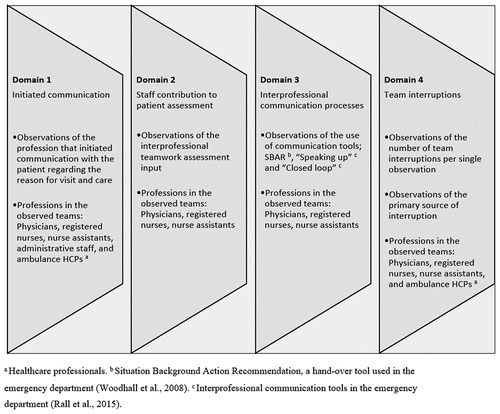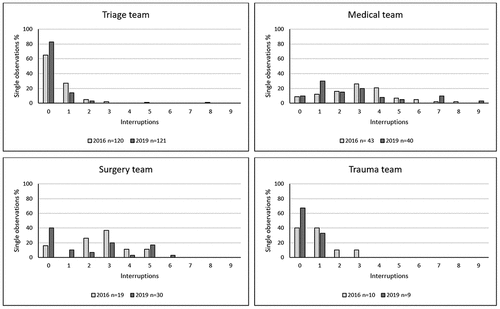Figures & data
Figure 1. The ED organization and process of triage post-intervention.

Figure 2. Department-wide strategies implemented in the ED between 2016 and 2019.

Figure 3. Domains of interprofessional communication in the observation tool used in the pre- and post-intervention periods.

Table 1. Characteristics of each interprofessional teamwork in single observation a
Table 2. Observed interprofessional communication behaviors related to environmental factors during the coordination of patient care for all HCPs (n = 392 single observations a)
Table 3. Observed interprofessional communication behaviors related to environmental factors during coordination of patient care for each ED team a
Figure 4. Number of interruptions per single observation (%), pre- and post-intervention.

